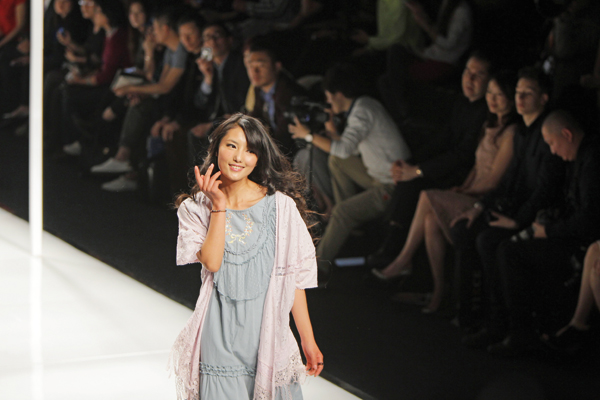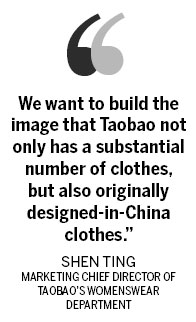
Fashion you can touch
( China Daily )
Updated: 2013-04-22
|
|||||||||
"It's like playing a videotape of the real fashion world 10 times faster," she says. "That is not only because we need to put so many new pieces on the shelf every week, but also once you miss the pace (of fashion), your works die out every quickly."
To keep up, Mai and her team read whatever fashion magazines are available and watch fashion shows from the Big Four (fashion weeks in New York, London, Milan and Paris) whenever they are not doing design work.
Zheng Lei, the chief designer of Cutie Pigie, another womenswear brand on Taobao that took part in the fashion show, says his pace is even faster.
With 10 designers, 31-year-old Beijing native Zheng has spent his past four years producing sweet, cute fashion garments tailored for college students. He says he's "either thinking of designing or turning the designs into reality every single day", except for two weeks every year, the Spring Festival and the National Day Holiday.
"We upgrade our shelf three times a week, each time with about 100 new pieces," says Zheng.
Ninety percent of the pieces sold at Cutie Pigie are designed by Zheng and his team, while the rest are from the wholesale market. A best-selling dress, sold at 300 yuan ($50) apiece, can generate 10,000 sales.
"This is the moment we are most happy, knowing our works will be worn by so many people," Zheng says.
Statistics from Taobao show that there are 1.3 million stores selling womenswear on the website. Up to 50 percent of the stores that have their own designers are on the list of the top 1,000 most popular stores.
Daily stock of womenswear on the website adds up to about 100 million pieces, among which 80,000 are new on the shelf.
"We want to build the image that Taobao not only has a substantial number of clothes, but also originally designed-in-China clothes," says Shen, the marketing chief.
Since its founding in 2003, the Hangzhou-based online shopping bazaar has been constantly accused of selling pirated or counterfeit products of world-renowned luxury or fashion brands. But designers said the situation is unfair to them.
"In the era of digital, it's very easy to be found out if we are copying. We learn from the big fashion designers and brands, but we design our own works," says Mai, the creative director of Amii.
Official Website of the Sheshan National Tourist Resort, Shanghai




